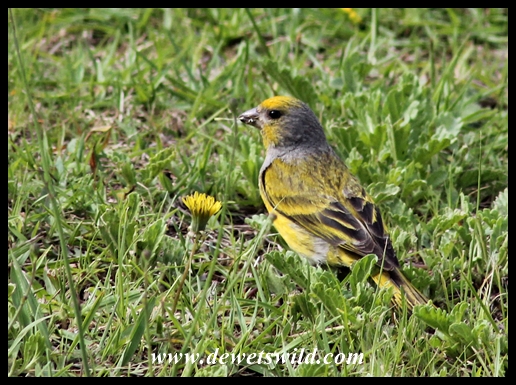Serinus canicollis
The Cape Canary inhabits arid scrub, fynbos, grassland, dune vegetation, agricultural fields, parks and gardens, even at high elevations. They’re usually encountered in small flocks, though these occasionally swell to number 500 or more birds, and subsist on a diet comprised chiefly of grass and weed seeds.
Breeding in the Cape Canary has been recorded throughout most of the year, with a peak in the spring and early summer. Their cup-shaped nests are built in tall trees using soft plant material. Clutches of up to 5 eggs are incubated for about two weeks, with the chicks leaving the nest when they’re about 3 weeks old. Adults measure about 12cm in length and weigh around 17g.
Naturally, the Cape Canary occurs only in the highlands on the border of Mozambique and Zimbabwe, in Swaziland, Lesotho and South Africa (parts of all provinces except North West). Apparently they have also been introduced to Mauritius and Reunion in the Indian Ocean. The IUCN lists the Cape Canary as being of least concern. though trapping for the illegal caged bird trade should be of concern.
















